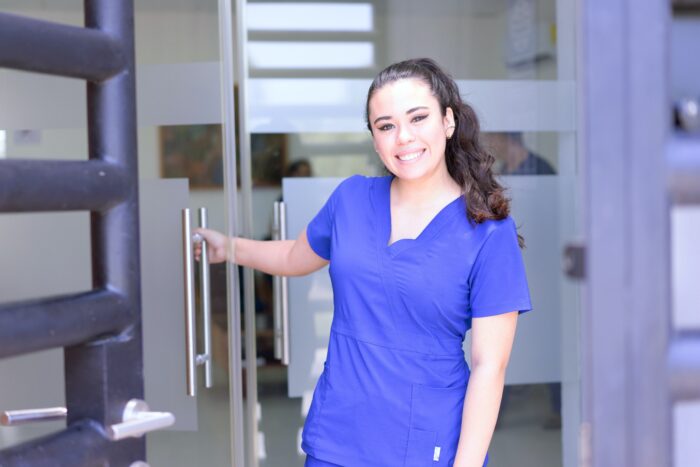Medical assistance is considered the best gateway for anyone looking to enter the healthcare industry.
But first, you might be wondering, What is a Medical Assistant?
Medical Assistants are healthcare workers who provide support services to physicians, nurses, and other healthcare professionals.
Their duties generally include both clinical and administrative tasks, such as scheduling appointments, answering phone calls, and prepping the examination room for patients, among others.
Medical assistants are considered to be the backbone of the healthcare industry since they help in running the clinic smoothly. They generally work full-time for about 40 hours a week; however, these hours may differ depending on the type of work setting.
Read on to find out more about what a typical day in the life of a medical assistant looks like, medical assistant job duties, and more.
Also see: Medical Assistant Terminology
A Typical Day in The Life of a Medical Assistant
Even though most medical assistants work full-time, some also work part-time. The typical hours of work for medical assistants are around 40 hours per week. However, this is highly dependent on their work settings.
Also see: 12 Reasons to Become a Medical Assistant
For instance, medical assistants who work in private settings, such as private practices, might work from 8 am to 5 pm during normal business hours.
In contrast, medical assistants working in emergency departments might have to work on weekends, holidays, and overnight shifts.
The two usual schedules for medical assistants are five 8-hour shifts or three 12-hour shifts per week. Sometimes, medical assistants need to work overtime since there may be instances where patients need urgent care.
Medical assistants are sometimes also required to arrive early at work, before the inflow of patients, to organize and manage everything.
They may also choose to leave work later than their scheduled time to complete tasks such as restocking supplies, processing paperwork, etc.
Also see: How to get Medical Assistant jobs with no experience

Do You Want To Become a Medical Assistant? Check Out Free Medical Assistant Masterclass!
In our masterclass you learn:
- How to be a medical assistant faster…in just 4 months!
- Avoid student debt & driving to classes
- #1 thing employers want from Medical Assistants
- How to stand-apart & get a university certificate for a strong resume
Work Day Schedule of Medical Assistants
A clinic or physician’s office is generally packed with appointments, and medical assistants hence have to work with a lot of patients in a typical day. They need to be well-organized and efficient while performing their duties to provide optimum care to patients.
As mentioned earlier, the typical duties of a medical assistant include both clinical and administrative tasks. This is also dependent on the type of work setting medical assistants choose.
Let us look at a sample of what a normal workday for medical assistants working in a hospital may look like:
- 8 am: Reach the hospital before any patients
- 8 to 9 am: Review the day’s agenda and prep examination rooms for patient visits
- 9 to 10:30 am: Answer calls, schedule appointments, record vitals of patients, and assist patients
- 10:30 am to 12:30 pm: Assist patients with billings and answer more calls
- 12:30 to 1 pm: Lunch break
- 1 to 3 pm: Take patient’s vitals, review and update patient medical history, schedule appointments, assist patients
- 3 to 4:45 pm: Answer more phone calls, help patients with billing, review and update patient medical charts
- 4:45 to 5 pm: Debrief session with coworkers, restock supplies, and clean examination rooms for the next day
- 5 pm: Finish shift
Also see: Medical Assistant vs Medical Billing and Coding
Typical Duties of a Medical Assistant
The tasks of a medical assistant include both clinical and administrative tasks.
While administrative tasks involve working more at the front office, such as answering phone calls and scheduling appointments, clinical tasks involve tasks such as assisting supervisors with patient care.
Also see: National Certified Medical Assistant NCMA
Let us take a look at these two types of tasks-
Clinical Duties
The duties of a certified clinical medical assistant involve working closely with physicians or other healthcare professionals. Their main goal is to provide optimum patient care.
Also read: Medical Assistant Certificate Requirements
The main clinical duties of a medical assistant look like this:
- Reviewing health histories of patients
- Prepping and collecting samples for laboratory analysis (Medical Laboratory Technician)
- Restocking supplies for the examination rooms
- Recording patient vitals, such as taking blood pressure, pulse, and weight (See: Can Medical Assistants Draw Blood?)
- Assisting physicians or nurses with bedside medical procedures (Medical Assistant vs Nurse)
- Acting as a liaison between patient and physician, communicating instructed care to patients
Also see: Is Medical Assistant a Good Career?
Administrative Duties
Medical assistants need to balance administrative duties with clinical ones to keep the healthcare system functioning smoothly.
Some of the main administrative tasks of a medical assistant may include:
- Answering phone calls
- Greeting patients and directing them to their assigned rooms
- Updating and maintaining patient health records
- Assisting patients with billing, paperwork, and insurance
- Scheduling appointments
Apart from the duties, you should also make sure you’re well-versed in top medical assistant skills that employers might demand.
Read More: CMAA vs CCMA
Where Do Medical Assistants Work?
If you are interested in this career, you might want to know more about where can medical assistants work.
Medical assistants are known to work in a variety of different healthcare settings, such as hospitals, outpatient care clinics, and physicians’ private practices.
Some medical assistants also work in specialized healthcare settings, such as chiropractic clinics, pediatric clinics as a pediatric medical assistant, OB-GYN offices, and optometry offices.
See more on: Medical Assistant Career Path
The work schedules of medical assistants are highly dependent on the type of healthcare setting they choose, as mentioned earlier. For example, medical assistants who work in private practices tend to have a more regular working schedule as opposed to other settings.
They tend to work from 8 am to 5 pm during weekdays. They are also known to work on more relaxed schedules as opposed to medical assistants working in hospitals, and they also have to tend to fewer patients.
See more: Medical Assistant Scope of Practice by State
Conclusion
Understanding the flexible and varied hours of medical assistants is key to appreciating their role in healthcare settings. Their schedules often adapt to the demands of the facility, encompassing both administrative and clinical duties.
Whether they work standard office hours, evenings, weekends, or even on-call shifts, their dedication remains unwavering in supporting healthcare professionals and ensuring patients receive quality care.
Medical Assistant – FAQs
How much do Medical Assistants earn annually?
As per the US Bureau of Labor Statistics (BLS), the median annual wage for medical assistants was approximately $38,270. This roughly translates to an hourly wage of around $18.40.
However, it’s essential to note that salaries can vary based on factors such as location, experience, education, and the specific healthcare facility or setting where the medical assistant works.
Is it hard to become a Medical Assistant?
Becoming a medical assistant means finishing an education program that teaches medical skills and knowledge. It’s not as long as some healthcare jobs, but it needs both technical and people skills. Medical assistants do different jobs at once, like paperwork and helping patients, so it’s important to be good at paying attention and adjusting to changes.
Is Medical Assistance a good career?
Yes! Being a medical assistant can be a rewarding career. It offers opportunities to work directly with patients, making a meaningful impact on their healthcare experiences.
It’s a field with growth potential, and the training period is relatively shorter compared to some other healthcare professions. Plus, the diverse responsibilities keep the job interesting. It’s a good fit for those who enjoy a mix of administrative tasks and hands-on patient care.
Additional Resources:
If you’re interested in becoming a medical assistant, here are a few additional guides you can check out –
- What is a Medical Assistant
- How long does it take to become a medical assistant
- Medical Assistant Programs
- How to Become a Medical Assistant
- CMA vs CNA
- Certified Medical Assistant Salary
- Which Medical Assistant Certification is Best?
- Are Medical Assistant Licenses Required?
- Military Medical Assistant
- Medical Assistant On-the-Job Training
- Medical Assistant vs EMT
- Accelerated Medical Assistant Program
- Cheapest Medical Assistant Program
- Become a Medical Assistant in 6 weeks
Related Articles
-
How to Be Successful in College in 2022 – 7 Simple Tips to Succeed
-
How Do Scholarships Work? Read This First…Truth is Shocking
-
7 Best College Majors 2024: What Should I Major In?
-
How to Choose a College – 10 Things You Must Consider in 2024
-
Why Go to College? Top 13 Benefits for Adult Students in 2022
-
Top 5 Best Alternatives to Community College for 2024








